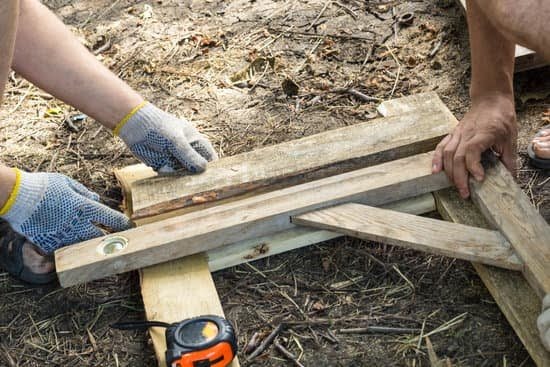What is live edge woodworking? This increasingly popular woodworking trend involves incorporating the natural edge of the wood into the design, showcasing the raw beauty and organic feel of the timber. Live edge woodworking focuses on preserving and enhancing the unique characteristics of each piece of wood, creating one-of-a-kind pieces with a touch of nature.
The history of live edge woodworking can be traced back to early artisans who saw the potential in using raw-edge lumber for furniture and decor. Over time, this trend has evolved into a modern aesthetic that celebrates imperfections and embraces the natural shapes and textures of wood. Live edge woodworking adds a rustic yet contemporary element to any space, blending seamlessly with various interior design styles.
Using live edge wood in woodworking projects offers numerous benefits beyond its visual appeal. The irregular edges and natural features of live edge wood add character to furniture pieces, creating a sense of authenticity and craftsmanship. Additionally, working with live edge wood allows for sustainable practices by utilizing salvaged or reclaimed wood, reducing waste and minimizing environmental impact.
The History of Live Edge Woodworking
Live edge woodworking is an art form that has gained popularity in recent years for its natural and rustic aesthetic. But where did this trend originate, and how has it evolved over time? The history of live edge woodworking dates back to the mid-20th century, but it wasn’t until the past decade that it truly began to gain mainstream attention.
To understand the roots of live edge woodworking, we must look back to the mid-20th century when George Nakashima, a renowned Japanese-American woodworker, pioneered the use of live edge slabs in his furniture designs. Nakashima celebrated the natural beauty of wood by preserving its live edges, bark inclusions, and imperfections, creating pieces that were both functional and artistic. His work inspired a new generation of woodworkers to explore the possibilities of incorporating live edge elements into their projects.
As the years passed, live edge woodworking continued to evolve as artisans experimented with different techniques and styles. What started as a niche trend within the woodworking community grew into a widespread movement embraced by designers, craftsmen, and DIY enthusiasts alike. Today, you can find a wide range of live edge furniture pieces, home decor items, and custom woodworking projects that showcase the beauty of natural wood in all its organic glory.
Benefits of Using Live Edge Wood in Woodworking Projects
Live edge woodworking involves using wood that still retains the natural edge of the tree it was cut from, creating unique and organic designs. One of the main benefits of using live edge wood in woodworking projects is the aesthetic appeal it brings.
Each piece of live edge wood carries its own distinct characteristics, such as knots, grains, and imperfections, making every project one-of-a-kind. This adds a touch of nature and rustic charm to any piece, creating a conversation starter in any room.
In addition to its visual appeal, live edge wood is also environmentally friendly. By using wood that would otherwise go to waste, such as fallen or salvaged trees, you are contributing to sustainable practices in woodworking. Choosing live edge wood also allows for a deeper connection with nature, as each piece tells a story of its own growth and journey. This can bring a sense of authenticity and warmth to your projects that cannot be replicated with traditional lumber.
Moreover, working with live edge wood can present new design opportunities and challenges. The natural curves and shapes of live edge slabs can inspire creativity in woodworking projects. Incorporating live edges into furniture pieces or decor items can add a touch of rustic elegance to any space. With proper finishing techniques, live edge projects can last for generations, showcasing the beauty of nature’s imperfections in every knot and grain pattern.
| Benefits | Details |
|---|---|
| Aesthetic Appeal | Unique characteristics like knots and grains create one-of-a-kind pieces |
| Environmentally Friendly | Using salvaged or fallen trees promotes sustainable practices |
| Creative Opportunities | Natural curves inspire creativity and add rustic elegance to projects |
Types of Wood Used in Live Edge Woodworking and Their Characteristics
Live edge woodworking encompasses a wide variety of wood species that can be used to create stunning and unique pieces. Each type of wood has its own characteristics and qualities that contribute to the overall appearance of the final project. Here are some popular types of wood used in live edge woodworking, along with their unique features:
- Maple: Known for its durability and versatility, maple is a popular choice for live edge projects. It has a light color with subtle grain patterns, making it perfect for both modern and rustic designs.
- Walnut: Walnut is prized for its rich, dark color and straight grain. It adds a touch of elegance to any project and ages beautifully over time, developing a deep patina.
- Cherry: Cherry wood is known for its warm reddish-brown hues and smooth texture. It is a popular choice for furniture making due to its natural luster and ability to darken with age.
Another popular option is:
- Oak: Oak is a strong and sturdy wood that is commonly used in live edge projects. It has a prominent grain pattern and comes in various shades, from light brown to deep red. Oak is also highly resistant to moisture, making it ideal for furniture that will be used daily.
Each type of wood brings its own unique personality to a live edge project, allowing artisans to showcase nature’s beauty in their creations. By selecting the right type of wood based on the desired look, durability, and characteristics needed for the project at hand, craftsmen can truly bring out the best in live edge woodworking creations.
Whether you prefer the subtle elegance of maple or the timeless charm of walnut, choosing the right type of wood is essential in creating a successful live edge woodworking project. The diversity in characteristics among different wood species enables craftsmen to explore endless possibilities in design and craftsmanship. Experimenting with various types of wood can lead to stunning results that truly showcase the beauty of live edge woodworking projects.
Tools and Equipment Needed for Live Edge Woodworking
Live edge woodworking, also known as natural edge woodworking, is a technique that involves using the natural edge of the wood slab in furniture and other woodworking projects. To successfully create stunning pieces using live edge wood, it is crucial to have the right tools and equipment at hand. Whether you are a seasoned woodworker or just starting out, having the proper tools can make all the difference in the quality of your finished project.
Essential Tools for Live Edge Woodworking
One of the most essential tools needed for live edge woodworking is a high-quality chainsaw or a bandsaw. These tools are used to cut the wood slab along its natural edges, preserving its unique shape and character. Additionally, having a good quality hand plane and chisels is crucial for smoothing out rough surfaces and refining details on the live edge piece.
Safety Gear for Live Edge Woodworking
When working with live edge wood, it is important to prioritize safety. Investing in safety gear such as goggles, ear protection, and gloves is essential to protect yourself from potential hazards. Additionally, wearing a dust mask is recommended when sanding or cutting wood to prevent inhaling harmful particles.
Additional Equipment for Finishing Touches
In addition to basic tools like saws and chisels, having equipment like sanders, routers, and clamps can help you achieve professional-looking finishes on your live edge woodworking projects. Sanders can be used to smooth out rough surfaces and imperfections, while routers are handy for creating intricate designs on the edges of your piece.
Clamps are essential for holding pieces together securely during glue-up and assembly processes. By equipping yourself with the right tools and equipment for live edge woodworking, you can bring out the natural beauty of the wood while creating unique and stunning pieces that stand out.
Step-by-Step Guide to Creating a Live Edge Woodworking Project
Choosing the Right Wood
When embarking on a live edge woodworking project, selecting the right type of wood is crucial. Different types of wood offer distinct characteristics in terms of grain pattern, color variations, and durability. Some popular choices for live edge woodworking include walnut, maple, oak, cherry, and cedar. Each type of wood has its unique appeal, so it’s essential to consider what aesthetic and functional qualities you want in your finished piece.
Preparing the Wood
Once you have chosen the perfect piece of wood for your project, the next step is to prepare it for woodworking. This involves removing any bark or debris from the live edge to reveal the natural beauty of the wood.
Depending on the condition of the wood, you may need to sand it down to create a smooth surface for your project. It’s crucial to take your time during this stage as proper preparation will ensure a flawless final result.
Designing and Crafting Your Project
With your prepared live edge wood in hand, it’s time to get creative with your design. Whether you’re creating a live edge table, shelf, or wall art piece, sketch out your plan before diving into cutting or shaping the wood. Keep in mind that one of the main attractions of live edge woodworking is embracing and highlighting the natural shape and character of the wood.
Using tools such as table saws, chisels, routers, and sanders will help you bring your vision to life. Once your project is complete, applying a protective finish will not only enhance its natural beauty but also extend its lifespan.
By following these steps and letting your creativity flow through each stage of creating a live edge woodworking project, you’ll be able to produce a unique piece that showcases both nature’s beauty and your craftsmanship skills with unparalleled elegance and charm.
Popular Live Edge Woodworking Techniques and Styles
Live edge woodworking has gained popularity in recent years due to its unique and natural aesthetic. One of the popular techniques in live edge woodworking is the use of epoxy resin to fill gaps and cracks in the wood, creating a smooth and polished finish.
This technique not only adds strength to the wood but also enhances its visual appeal. Additionally, using bow ties or butterfly joints is another common technique to stabilize wood slabs, especially when dealing with cracks or splits.
In terms of styles, one prevalent approach in live edge woodworking is the rustic or industrial style. This style often involves leaving the bark on the edges of the wood slab to maintain its raw and organic look.
Another popular style is the modern or minimalist approach, where clean lines and simple finishes are preferred to showcase the natural beauty of the wood. Mixing different wood species in a project is also a unique style that adds depth and dimension to live edge pieces.
Moreover, combining live edge woodworking with other materials such as metal, glass, or stone can create a fusion of styles that results in truly one-of-a-kind pieces. By experimenting with various techniques and styles, woodworkers can push the boundaries of traditional woodworking practices and create innovative designs that showcase the beauty of live edge wood.
| Live Edge Woodworking Techniques | Styles |
|---|---|
| Epoxy resin filling | Rustic/Industrial Style |
| Bow ties or butterfly joints | Modern/Minimalist Style |
| Mixing different wood species | Fusion Style |
Inspirational Examples of Live Edge Woodworking Projects
Live edge woodworking has gained popularity in recent years for its unique and natural aesthetic. Many artisans and crafters have embraced this trend, creating stunning pieces that showcase the beauty of live edge wood. From intricate dining tables to rustic shelves, there is no limit to the creativity that can be expressed through live edge woodworking.
One inspirational example of live edge woodworking is the creation of a live edge coffee table. This project involves carefully selecting a slab of wood with a natural edge and preserving it in the final design. By incorporating metal hairpin legs or a sleek base, the live edge coffee table becomes a focal point in any living space, adding warmth and character to the room.
Another captivating example of live edge woodworking is the crafting of live edge shelves. By utilizing smaller pieces of live edge wood and mounting them on walls, individuals can create unique shelving units that not only serve a functional purpose but also add a touch of nature to their home decor. These shelves are perfect for displaying photos, plants, or other decorative items, making them a versatile addition to any room.
Whether it’s a live edge dining table, a statement headboard, or even custom wall art, there are countless possibilities when it comes to live edge woodworking projects. The natural curves and imperfections of live edge wood add charm and character to each piece created, making them truly one-of-a-kind works of art.
Embracing the beauty of nature through live edge woodworking allows artisans to connect with their materials in a way that celebrates the authenticity and uniqueness of each piece.
Tips and Tricks for Beginners Looking to Start Live Edge Woodworking
If you’re a beginner looking to get started in live edge woodworking, there are a few tips and tricks that can help you navigate this unique and beautiful form of woodworking. First and foremost, it’s important to understand what live edge woodworking is all about.
This style of woodworking focuses on preserving the natural edges of the wood, giving each piece a raw and organic feel. By embracing the natural imperfections and irregularities of the wood, live edge woodworking creates pieces that are truly one-of-a-kind.
When starting out in live edge woodworking, it’s crucial to choose the right type of wood for your project. Common types of wood used in live edge woodworking include walnut, cherry, maple, and oak.
Each type of wood has its own unique characteristics and figuring, so be sure to select a species that aligns with your vision for the final piece. Additionally, consider the size and shape of the live edge slab you’ll be working with, as this will influence the overall design of your project.
As a beginner in live edge woodworking, it’s essential to invest in quality tools and equipment to ensure successful outcomes in your projects. Some essential tools for live edge woodworking include a bandsaw for cutting slabs to size, a planer for smoothing surfaces, and sanders for achieving a flawless finish.
Additionally, having clamps and jigs on hand can help stabilize your workpieces during the various stages of construction. By equipping yourself with the right tools and knowledge, you’ll be well on your way to mastering the art of live edge woodworking.
Conclusion
Live edge woodworking is a captivating craft that allows artisans to harness the natural beauty of wood in its most raw and organic form. The trend of live edge woodworking has a rich history that showcases how this technique has evolved from traditional woodworking practices to become a sought-after style in modern design. By preserving the natural edges of the wood, live edge woodworking brings a touch of nature into interior spaces, creating a sense of warmth and authenticity.
One of the key benefits of using live edge wood in woodworking projects is the unique character it adds to each piece. No two live edge pieces are alike, as the grain patterns and imperfections in the wood tell a story of its origins and growth.
This individuality gives each project its own personality and charm, making it a standout feature in any décor. Additionally, live edge woodworking allows for a sustainable approach to crafting furniture and decor, as it often utilizes salvaged or reclaimed wood.
In conclusion, what is live edge woodworking if not an art form that celebrates the organic beauty of nature? It offers craftsmen and enthusiasts an opportunity to connect with the material on a deeper level, highlighting its natural intricacies and textures.
Whether you are just starting your journey into live edge woodworking or looking to expand your skills, embracing this technique can lead to stunning creations that bring a touch of rustic elegance into your home or space. So next time you embark on a woodworking project, consider incorporating live edge elements for a touch of uniqueness and sophistication.
Frequently Asked Questions
What Is the Difference Between Live Edge and Straight Edge Wood?
Live edge wood is characterized by having the natural, irregular edge of the tree trunk or branch incorporated into the design of the piece, whereas straight edge wood has clean-cut, uniform edges. This unique feature of live edge wood adds a touch of nature and rustic charm to furniture and decor.
Is Live Edge Wood More Expensive?
Generally speaking, live edge wood pieces tend to be more expensive than their straight edge counterparts. This is due to several factors, including the uniqueness of each live edge slab, the labor-intensive process of working with natural edges, and the higher demand for this trendy style in the market.
Do Live Edge Tables Crack?
Live edge tables are prone to cracking over time due to changes in temperature and humidity levels that cause the wood to expand and contract. To minimize the risk of cracking, it’s important to properly dry and stabilize the wood before use, as well as maintain appropriate environmental conditions in your home.
Regular maintenance like oiling can also help prevent excessive drying or warping that may lead to cracks in live edge tables.

Hi everyone! I’m a woodworker and blogger, and this is my woodworking blog. In my blog, I share tips and tricks for woodworkers of all skill levels, as well as project ideas that you can try yourself.





